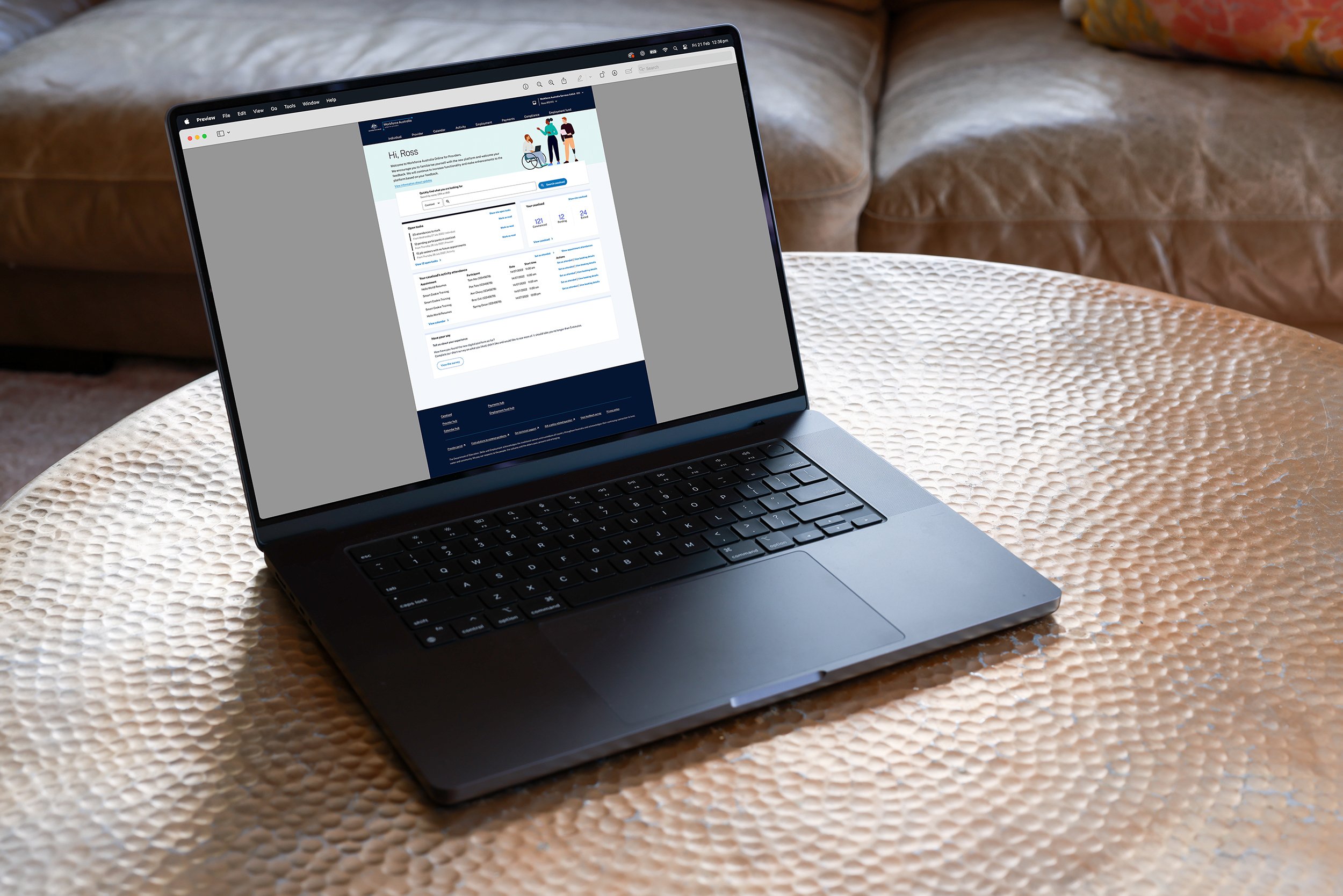Workforce Australia: Transforming Employment Services.
Dripping Agency contributed to the modernisation of ESS Web into Workforce Australia Online for Providers, employing a user-centered design and research-driven approach. The project integrated Agile methodologies, accessibility standards, and ongoing stakeholder input, resulting in a beta platform that significantly enhanced overall performance, reliability, and ease of use for employment service providers and job seekers. This approach set new standards in government services and proved scalable for future technological advancements.



Project Overview
Dripping Agency employees served on the design team for the Workforce Australia Online for Providers project, including one individual who acted as the Design Lead.
The project involved modernising the Employment Service System Web (ESS Web) to create a platform that would better support employment service providers in assisting job seekers re-enter the workforce. The primary goal was to develop a trusted, fast, reliable, and user-friendly platform that would enhance service providers’ ability to overcome barriers and offer pathways to employment through upskilling programs and work experience.
Initially, ESS Web was used by around 30,000 service providers and internal staff members. Over time, the system lagged behind emerging technologies, affecting its scalability, usability, and performance. To address these challenges and align with the evolving IT landscape, it was necessary to infuse new technologies and modernise the platform. This decision was outlined in the IT strategic plan after a white paper proposing a new platform and technologies was presented to the Department of Education, Skills and Employment’s (DESE) design authority forum.
Approach:
A collaborative design approach was adopted based on the Digital Transformation Agency’s (DTA) Digital Service Standard (DSS), Agile principles, and design thinking methodologies. This ensured a focus on user needs while encouraging close collaboration among stakeholders. Coordination with internal and external teams helped align objectives and ensure the platform would meet the diverse needs of service providers.
The approach also included a robust research strategy that combined attitudinal and behavioral qualitative and quantitative methods. This mix of moderated and unmoderated research techniques accelerated understanding of user motivations, behaviors, and needs. Active involvement of the design team in the research process allowed for the collection of deep insights, which were subsequently translated into personas, experience maps, and research packs—key tools in communicating findings and fostering stakeholder empathy.
Research Strategy and Execution:
A central component of the research strategy was the Research Opt-in model, enabling service providers across Australia to volunteer their participation. This approach ensured real user feedback and helped reduce long-term costs by relying on evidence-based design. A structured product roadmap guided research planning, highlighted knowledge gaps, and detailed both qualitative and quantitative research goals.
Research activities included usability testing, card sorting, contextual inquiry, and cognitive interviews. Even during the pandemic, the team transitioned to digital platforms, ensuring continuous research efforts. Tools such as Miro and digital post-it notes were used in line with the Research Cadence methodology to facilitate post-session analyses, pinpoint key insights, and uncover opportunities.
Design Process and Outcomes:
Continuous synthesis of research insights into clear design artifacts informed the platform’s information architecture and user interactions. This process was supported by the creation of personas, behavioral models, and service-level blueprints, all of which helped streamline system complexity and deepen understanding of user needs.
One of the most significant outcomes was the beta platform, which was well-received by users and performed better than the legacy ESS Web system. Accessibility was emphasized from the start, with adherence to WCAG 2.0 AA guidelines to ensure inclusivity and ease of use for a broad range of users.
Research findings also guided system and business process flows, which informed mock-ups and design concepts. A strong focus on stakeholder engagement was maintained through research playback sessions and collaborative workshops, keeping all parties aligned and informed.
Conclusion:
The successful redesign and modernisation of the Workforce Australia Online for Providers platform was achieved through a user-centered, evidence-based design process and thorough collaboration among stakeholders. By continuously refining methodologies and maintaining consistent engagement, the resulting solution met the immediate needs of service providers while remaining scalable for future growth and technological advancements. This project demonstrated the transformative power of research-driven design in government services, setting a new standard for meeting user needs.
